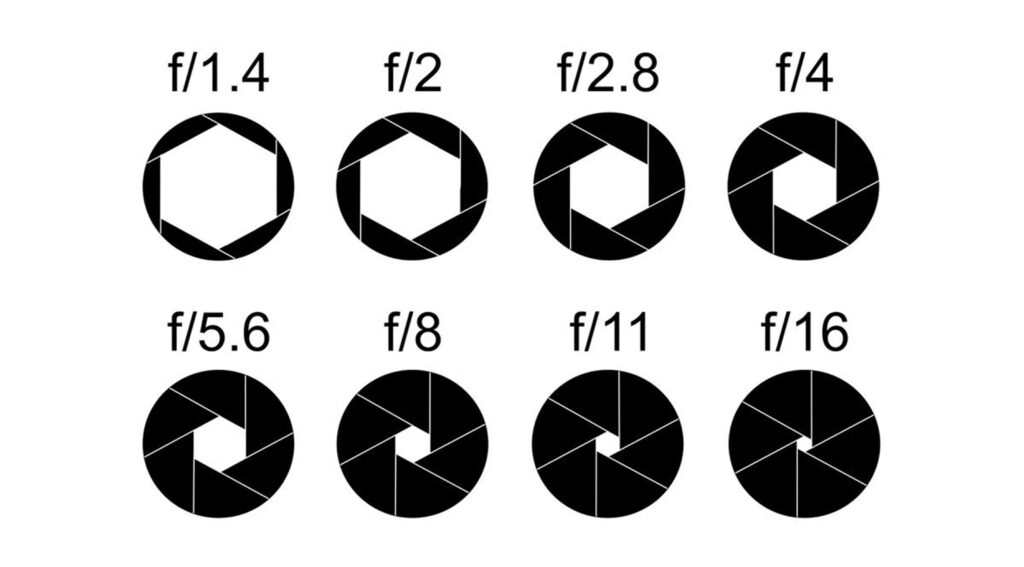The diaphragm controls both depth of field and the amount of light. It is not measured with by the opening in millimetres, but according the ratio between the focal length and the diameter of the lens. The aperture is measured by the letter “F”, for example F 5.6.

In the picture is shown the diaphragm in its various values. The lower value, for example F2, means that it is completely open whilst the maximum value, for example F22, means that is completely closed. A low value of diaphragm means that enters a big amount of light but the depth of field is very short, whilst a high value means that enter a few light but the depth of field is greater. The diaphragm to the extreme It is very important to know that to set the diaphragm to lower or greater values means having a loos of sharpness. Usually, it is used to the extreme when:
- There is not enough light or to have more blur;
To have a great depth of field. It reduces the phenomenon of vignetting, which is a reduction of an image’s brightness or saturation at the periphery compared to the image centre.
Generally between the values F5.6 and F8 we have the maximum sharpness, because:
- For high values, more than F8 or F11, it presents the diffraction;
- For low values, lower than F5.6, it presents aberration.